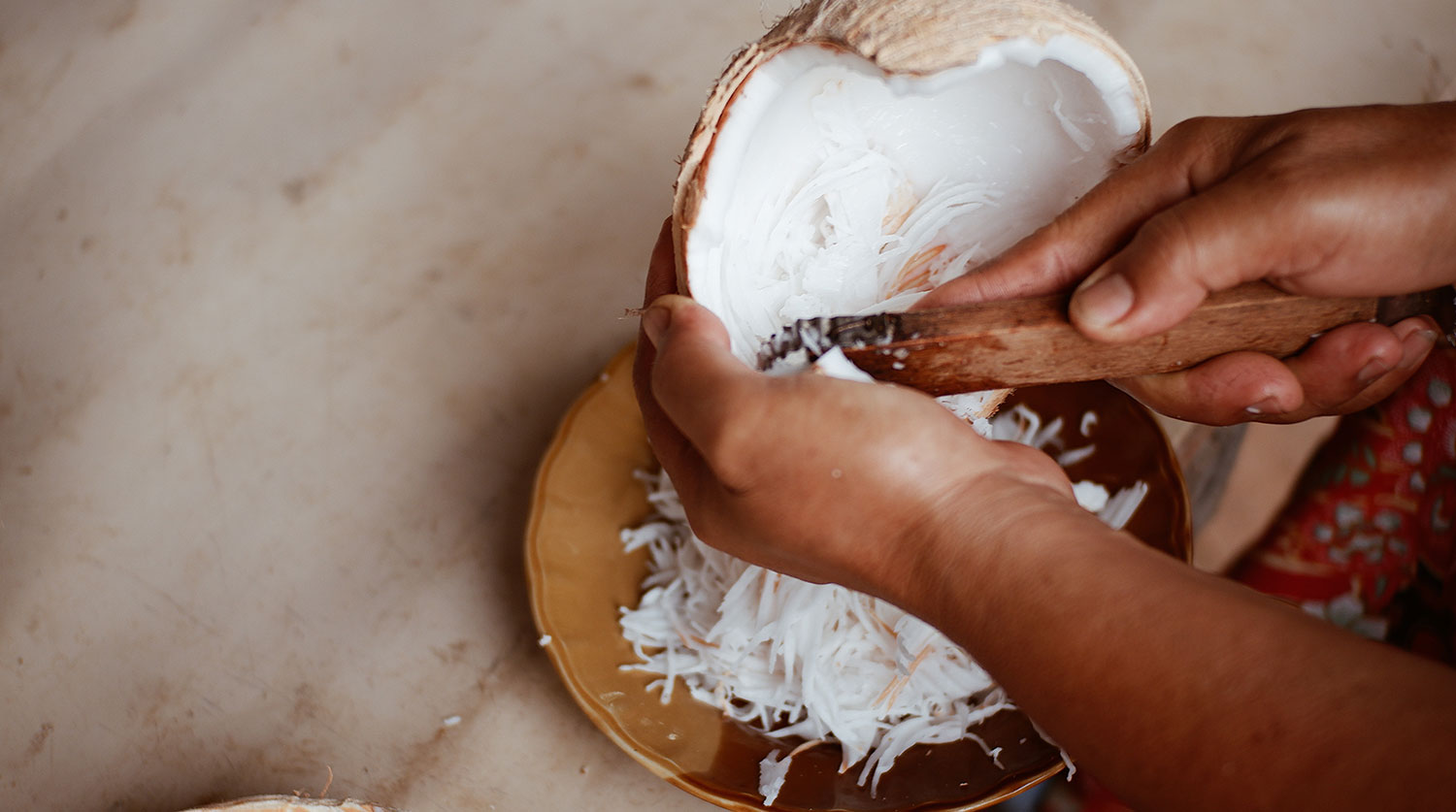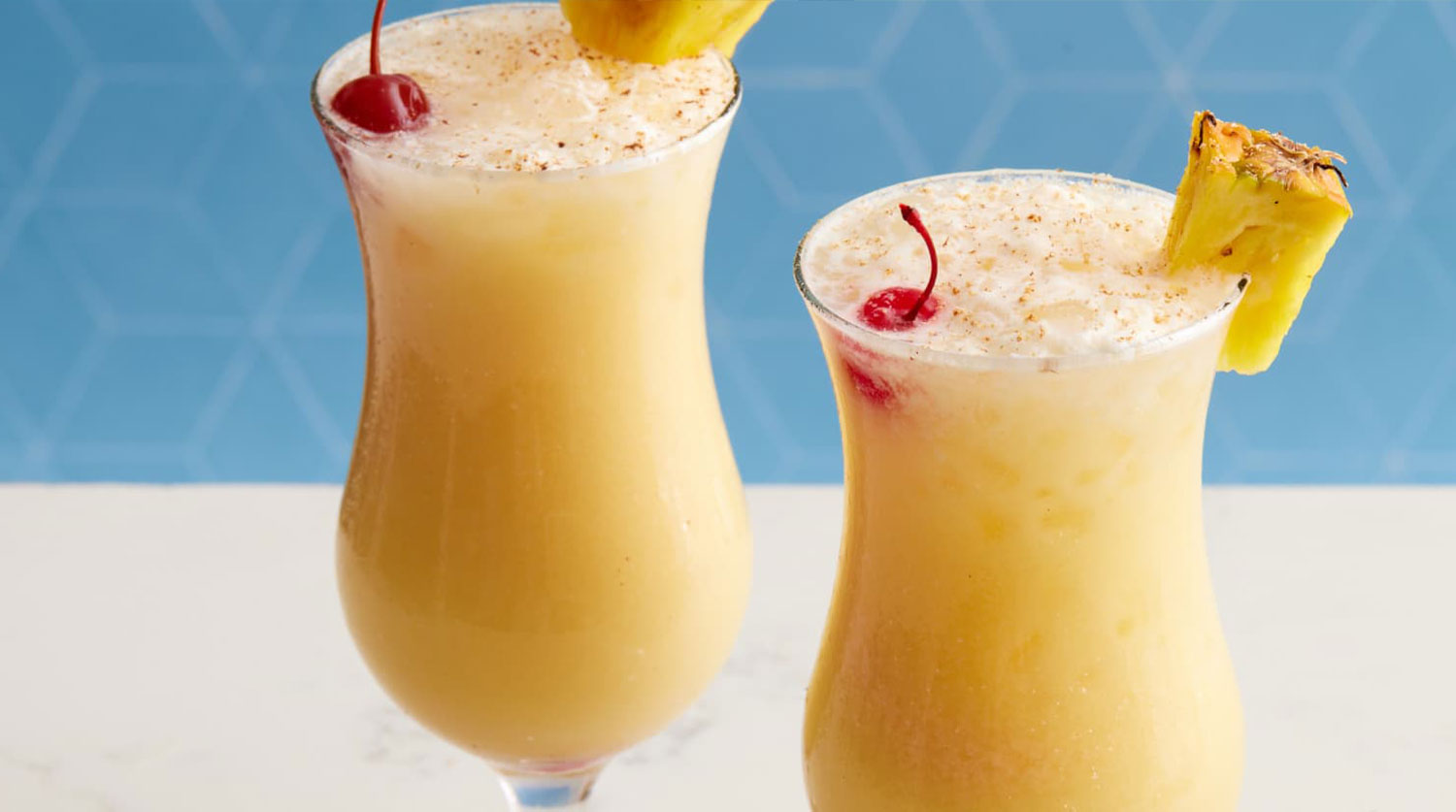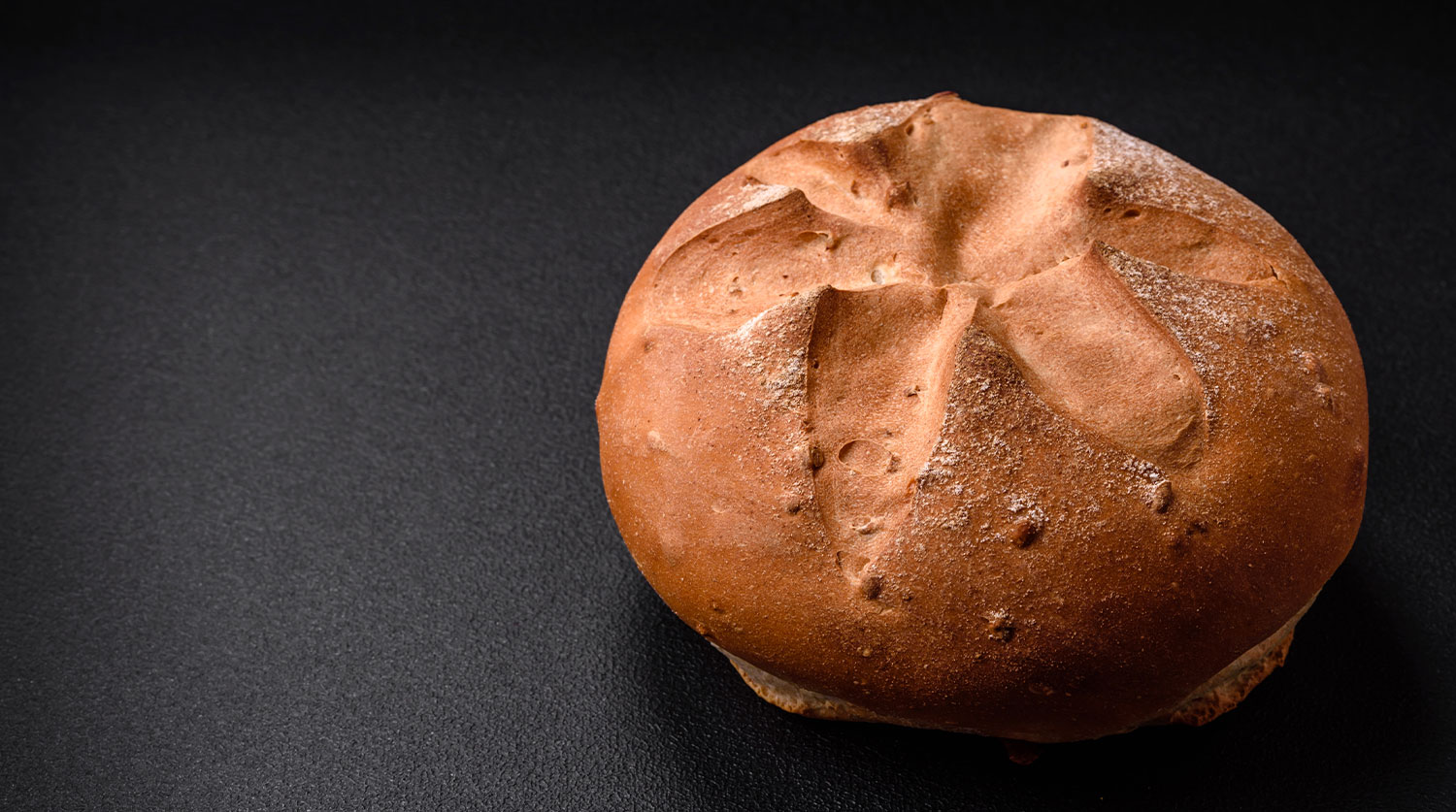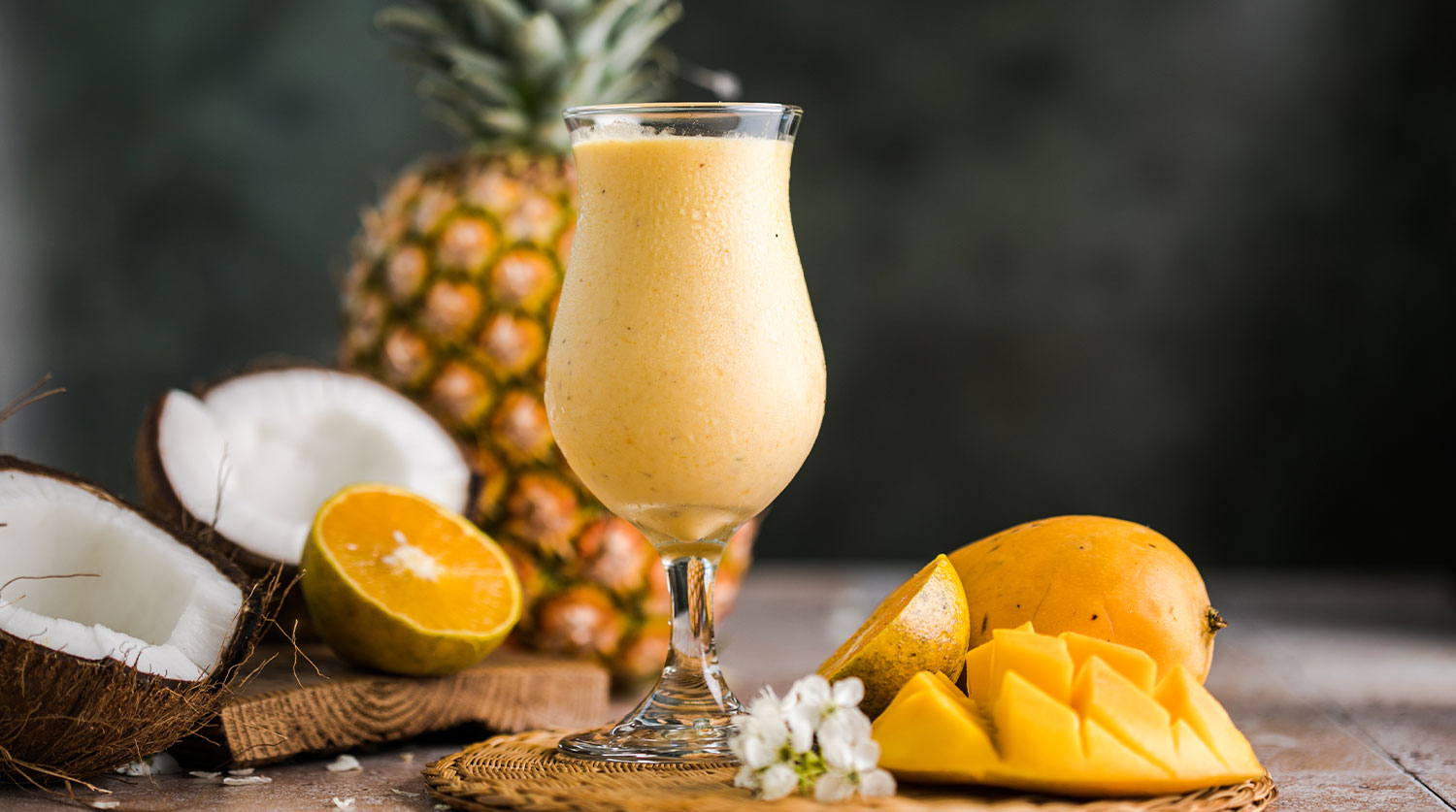Culinary
Cooking with Coconut: Exploring Authentic USVI Recipes

Coconuts are a quintessential ingredient in the culinary traditions of the U.S. Virgin Islands (USVI), offering a rich, tropical flavor that elevates many traditional dishes. From savory meals to sweet desserts, the versatility of coconut in USVI cuisine is unmatched. Whether you’re a seasoned cook or a food enthusiast eager to explore Caribbean flavors, these coconut-infused recipes will transport your taste buds to the heart of the Virgin Islands.
The Role of Coconut in USVI Cuisine
In the USVI, coconuts are more than just a tropical fruit; they are a staple in the local diet and culture. Every part of the coconut is used, from the water, milk, and flesh to the oil and even the shell. This zero-waste approach is deeply rooted in the island’s history, where coconuts have been a reliable food source and an integral part of the islands’ agricultural economy.
Coconuts are used in a wide variety of dishes in the USVI, contributing to their unique flavor profiles. The sweet, creamy coconut milk is a key ingredient in many traditional recipes, while grated coconut adds texture and flavor to both savory and sweet dishes.
Traditional USVI Coconut Recipes
1. Coconut Curry Chicken
One of the most beloved dishes in the USVI is Coconut Curry Chicken. This dish blends tender chicken with a rich, creamy coconut milk base, seasoned with a blend of Caribbean spices. The key to this recipe is the use of fresh coconut milk, which adds a depth of flavor that canned versions simply can’t match.
Ingredients:
- 1 whole chicken, cut into pieces
- 1 cup fresh coconut milk
- 2 cloves garlic, minced
- 1 onion, chopped
- 2 tablespoons curry powder
- 1 teaspoon thyme
- Salt and pepper to taste
- 2 tablespoons vegetable oil
Instructions:
- Heat the oil in a large pot over medium heat. Add the garlic and onion, sauté until softened.
- Add the curry powder and thyme, cooking until fragrant.
- Add the chicken pieces, browning them on all sides.
- Pour in the coconut milk, reduce heat, and let simmer for 25-30 minutes until the chicken is cooked through.
- Season with salt and pepper to taste. Serve with rice or roti.
2. Coconut Rice and Peas
Coconut Rice and Peas is a staple side dish in the USVI, often served alongside meats or fish. The creamy coconut milk infuses the rice with a subtle sweetness that perfectly complements the earthiness of the peas.
Ingredients:
- 1 cup long-grain rice
- 1 cup fresh coconut milk
- 1 cup water
- 1 can pigeon peas, drained and rinsed
- 1 clove garlic, minced
- 1 teaspoon thyme
- Salt to taste
Instructions:
- Rinse the rice under cold water until the water runs clear.
- In a medium saucepan, combine the coconut milk, water, and garlic. Bring to a boil.
- Add the rice, peas, thyme, and salt. Stir well.
- Reduce the heat to low, cover, and simmer for 20-25 minutes, or until the rice is tender and the liquid is absorbed.
- Fluff with a fork before serving.
3. Coconut Drops
For a sweet treat, Coconut Drops are a must-try. These small, sweet cakes are made from grated coconut, ginger, and brown sugar, offering a delightful balance of flavors and textures. They are a popular snack and dessert throughout the Virgin Islands.
Ingredients:
- 2 cups grated coconut
- 1 cup brown sugar
- 1 teaspoon grated ginger
- 1 cup flour
- 1/2 teaspoon baking powder
- 1/4 teaspoon salt
- 1/2 cup water
Instructions:
- Preheat your oven to 350°F (175°C).
- In a large bowl, combine the grated coconut, brown sugar, and ginger.
- In a separate bowl, sift together the flour, baking powder, and salt. Gradually add to the coconut mixture, mixing well.
- Add water to form a thick batter.
- Drop spoonfuls of the batter onto a greased baking sheet.
- Bake for 20-25 minutes, or until the drops are golden brown.
- Let cool before serving.
Coconut: A Nutritional Powerhouse
Beyond its delicious flavor, coconut is packed with nutrients. It is rich in healthy fats, particularly medium-chain triglycerides (MCTs), which are known to boost energy and support weight loss. Coconut also contains important minerals like manganese, which is essential for bone health and metabolism.
Cooking with Coconut: Tips and Tricks
- Use Fresh Coconut: Whenever possible, use fresh coconut milk and grated coconut for the best flavor.
- Balance Sweetness: Coconut naturally has a sweet flavor, so be mindful of how much sugar or sweet ingredients you add to your dishes.
- Experiment with Coconut Oil: Coconut oil is a fantastic substitute for butter or other oils in cooking and baking. It adds a subtle coconut flavor and is great for high-heat cooking.
Cooking with coconut allows you to bring a taste of the USVI into your kitchen. These traditional recipes showcase the versatility of coconut, from savory dishes like Coconut Curry Chicken and Coconut Rice and Peas to sweet treats like Coconut Drops. By incorporating coconut into your cooking, you can enjoy the flavors of the Virgin Islands no matter where you are.
Culinary
USVI Festive Drinks and Cocktails: A Taste of the Islands

The U.S. Virgin Islands are not only known for their breathtaking beaches and vibrant culture but also for their signature festive drinks and cocktails. From fruity tropical beverages to rum-infused delights, the islands offer a diverse selection of cocktails that are both refreshing and flavorful. Whether you’re attending a beachside party, celebrating Carnival, or simply soaking in the Caribbean vibe, these drinks provide the perfect complement to any occasion. Here’s a look at some of the must-try festive drinks and cocktails that capture the spirit of the USVI.
1. The Painkiller
One of the most iconic cocktails from the Virgin Islands, the Painkiller is a smooth blend of dark rum, cream of coconut, pineapple juice, and orange juice, served over ice with a sprinkle of nutmeg. Originally crafted at the Soggy Dollar Bar in the British Virgin Islands, this drink has become a staple across the USVI. Its rich tropical flavor makes it the ideal beachside cocktail, and the nutmeg adds a hint of spice that balances the sweetness.
Ingredients:
- 2 oz dark rum
- 4 oz pineapple juice
- 1 oz orange juice
- 1 oz cream of coconut
- Freshly grated nutmeg for garnish
The Painkiller is often enjoyed at beach bars and resorts throughout the USVI, making it a favorite among locals and tourists alike.
2. Bushwacker
The Bushwacker is another popular drink in the Virgin Islands, especially on St. Thomas and St. John. This creamy cocktail is often compared to a boozy milkshake, blending rum, vodka, Kahlúa, Baileys, and cream of coconut for a decadent treat. Topped with whipped cream and a cherry, the Bushwacker is a perfect choice for those with a sweet tooth, especially after a long day in the sun.
Ingredients:
- 1 oz dark rum
- 1 oz vodka
- 1 oz Kahlúa
- 1 oz Baileys Irish Cream
- 2 oz cream of coconut
- 1 cup ice
- Whipped cream and cherry for garnish
This rich and indulgent cocktail is a celebration in itself and is a frequent highlight during Carnival season and other festive events.
3. Cruzan Confusion
Named after the famous Cruzan Rum from St. Croix, the Cruzan Confusion is a cocktail that celebrates the island’s signature rum. This vibrant drink combines different flavors of Cruzan rum, often pairing light rum with coconut rum and a splash of tropical fruit juices like pineapple or orange. It’s a versatile drink that can be customized, but the core ingredients remain the same.
Ingredients:
- 1 oz Cruzan light rum
- 1 oz Cruzan coconut rum
- 3 oz pineapple juice
- Splash of orange juice
- A squeeze of lime for garnish
The Cruzan Confusion’s balance of sweetness and tanginess makes it a popular choice at beach parties, barbecues, and other festive gatherings.
4. Rum Punch
No list of USVI cocktails would be complete without mentioning the classic Rum Punch. A staple of the Caribbean, this punch is made with a combination of local rums, fruit juices, grenadine, and sometimes bitters. It’s served in large pitchers at gatherings, festivals, and family events. The beauty of Rum Punch lies in its simplicity and ability to be adjusted to fit any occasion.
Ingredients:
- 2 oz light rum
- 2 oz dark rum
- 3 oz pineapple juice
- 3 oz orange juice
- 1 oz grenadine
- A dash of Angostura bitters (optional)
- Orange slice and cherry for garnish
This crowd-pleasing cocktail is an essential part of the Virgin Islands’ social life, whether it’s during Carnival or a laid-back weekend by the beach.
5. Ting with a Sting
For those who enjoy a bit of a kick, Ting with a Sting is the go-to drink. Made with the Caribbean’s favorite grapefruit soda, Ting, and paired with a strong dark rum, this cocktail has a refreshing citrusy zing with a potent punch from the rum. It’s simple yet delicious and is often enjoyed as a casual drink on hot afternoons.
Ingredients:
- 2 oz dark rum
- 6 oz Ting (grapefruit soda)
- Lime wedge for garnish
This cocktail is beloved for its crisp and slightly bitter grapefruit flavor, paired with the smoothness of the rum. It’s perfect for sipping on a warm day while enjoying the island breeze.
6. Coquito
Although Coquito is traditionally a Puerto Rican holiday drink, it has gained popularity in the Virgin Islands, particularly around Christmas and New Year’s Eve. Similar to eggnog, Coquito is made with rum, coconut milk, condensed milk, vanilla, cinnamon, and nutmeg. It’s rich, creamy, and often served in small glasses during holiday celebrations.
Ingredients:
- 1 can coconut milk
- 1 can sweetened condensed milk
- 1 cup white rum
- 1 tsp vanilla extract
- 1 tsp cinnamon
- Nutmeg for garnish
Coquito is the perfect festive drink to enjoy with friends and family during the holiday season, offering a taste of the islands’ warm hospitality.
The Virgin Islands’ festive drinks and cocktails are an essential part of the local culture, offering a taste of the Caribbean’s vibrant flavors and traditions. From the smooth and tropical Painkiller to the festive Coquito, these drinks are perfect for any celebration. So next time you’re in the USVI, make sure to try one (or all) of these delicious cocktails for a true island experience.
For those looking to recreate these drinks at home, many ingredients can be found at local liquor stores or online. With the right mix of tropical flavors and quality rum, you can bring a bit of the Virgin Islands’ festive spirit into your own celebrations. Cheers!
Culinary
Traditional Bread Recipes from the Virgin Islands

The culinary traditions of the Virgin Islands offer a delicious glimpse into the islands’ rich cultural heritage. Among these cherished traditions, the art of bread-making holds a special place. Passed down through generations, traditional bread recipes from the Virgin Islands reflect the region’s diverse influences, blending African, European, and Caribbean flavors. From the beloved “dumb bread” to the sweet and spiced “Vienna cake,” these bread varieties are integral to the local cuisine.
Dumb Bread: A Virgin Islands Staple
One of the most iconic bread recipes from the Virgin Islands is “dumb bread,” a simple, dense, and satisfying loaf that has been a staple in island kitchens for centuries. Dumb bread is named for its humble ingredients and straightforward preparation—there’s no yeast involved, and it doesn’t rise much, hence the term “dumb.”
The recipe typically consists of flour, baking powder, sugar, salt, and coconut milk, giving the bread its signature slightly sweet taste. Some variations include grated coconut for added texture and flavor. Traditionally, dumb bread is baked in coal pots or outdoor brick ovens, giving it a crispy crust while maintaining a soft, chewy interior. This bread is commonly enjoyed alongside stewed meats, saltfish, or simply with butter and cheese for breakfast.
Coconut Tart: A Sweet Treat
Another beloved bread recipe is the coconut tart, which leans more toward dessert but is an integral part of the Virgin Islands’ bread tradition. The coconut tart is a pastry filled with a sweet coconut filling made from freshly grated coconut, sugar, and spices like nutmeg and cinnamon. The pastry dough is similar to that of a pie crust, but the star of the show is the rich coconut filling.
Coconut tart is often served during holidays, family gatherings, or special occasions. Its flaky crust and sweet, fragrant filling make it a favorite among locals and visitors alike. The tart is sometimes enjoyed with a cup of tea, providing a perfect blend of sweetness and spice.
Vienna Cake: A Celebration Bread
Vienna cake is another cherished bread-like recipe from the Virgin Islands, often made for celebrations such as birthdays, weddings, and other special events. Unlike traditional loaves of bread, Vienna cake is a soft, spongy cake enriched with butter and often flavored with vanilla, nutmeg, and rum.
The cake’s light, fluffy texture contrasts with the dense nature of other traditional breads, making it a special treat. It’s usually topped with a rich buttercream frosting or sometimes a simple glaze. The use of local spices and ingredients like rum gives it a unique Caribbean twist, making it a sought-after dessert at festive occasions.
Sweetbread: A Holiday Tradition
Sweetbread is another traditional recipe that has become synonymous with Virgin Islands’ celebrations, particularly during the Christmas season. This bread is made with a rich dough, filled with dried fruits, spices, and sometimes grated coconut. The bread is lightly sweetened, often with brown sugar or molasses, and spiced with cinnamon, nutmeg, and cloves.
In many families, sweetbread is a centerpiece during the holidays, often served alongside ham or other savory dishes. The combination of sweet and spicy flavors makes it a comforting and flavorful addition to the festive table.
Pot Bread: Rustic and Hearty
Pot bread, also known as “bake,” is another traditional bread in the Virgin Islands, often prepared using a cast-iron pot. This method gives the bread a rustic, hearty texture, with a crisp crust and a soft interior. The bread is often cooked over an open flame or in outdoor ovens, which adds a smoky flavor that enhances its overall taste.
Pot bread is typically served with savory dishes such as fish, stews, or curried meats. It’s also a popular choice for breakfast, eaten warm with butter, cheese, or jam.
Culinary
Healthy Caribbean Smoothie Recipes: A Tropical Boost for Your Wellness

The vibrant flavors of the Caribbean offer more than just a tropical escape—they’re also packed with health benefits. Caribbean fruits, with their rich nutrients, are the perfect base for smoothies that not only taste great but also boost your wellness. From energy-boosting options to immune-supporting blends, these healthy Caribbean smoothie recipes are your go-to for a nutritious and delicious treat.
Why Choose Caribbean Smoothies?
Caribbean fruits like mango, pineapple, papaya, guava, and coconut are not only delicious but also nutrient-dense. These fruits are rich in vitamins, antioxidants, and natural sugars, providing an excellent source of energy while supporting immune health, digestion, and skin vitality. With the right blend of ingredients, you can create smoothies that are both indulgent and nourishing.
Top 5 Healthy Caribbean Smoothie Recipes
1. Mango-Pineapple Immune Booster Smoothie
Mango and pineapple are a powerful duo that pack a vitamin C punch, helping to support your immune system. This smoothie is ideal for boosting your defenses during cold and flu season or whenever you need a quick pick-me-up.
Ingredients:
- 1 cup of fresh mango chunks
- 1/2 cup of fresh pineapple chunks
- 1/2 cup of coconut water
- 1/2 cup of Greek yogurt
- 1 tablespoon of honey (optional)
Instructions: Blend all ingredients until smooth. Pour into a glass and enjoy your tropical immune booster.
Benefits: Rich in vitamin C, antioxidants, and probiotics from yogurt, this smoothie helps promote gut health while supporting the immune system.
2. Papaya and Coconut Detox Smoothie
Papaya is known for its digestive benefits, while coconut provides healthy fats that keep you satisfied longer. This detox smoothie is refreshing and ideal for promoting digestive health.
Ingredients:
- 1 cup of papaya chunks
- 1/2 cup of coconut milk
- 1/2 banana
- 1 teaspoon of chia seeds
- 1 teaspoon of lime juice
Instructions: Combine all ingredients in a blender and mix until smooth. Sip slowly to enjoy the hydrating and cleansing benefits.
Benefits: Papaya’s enzyme, papain, aids in digestion, while chia seeds provide fiber, making this smoothie a great choice for supporting digestive health.
3. Guava and Spinach Green Smoothie
For a nutrient-packed green smoothie, guava and spinach make the perfect combination. Guava adds a sweet tropical flavor and is high in vitamin C, while spinach provides iron and other essential minerals.
Ingredients:
- 1 cup of guava (peeled and chopped)
- 1 handful of fresh spinach
- 1/2 cup of coconut water
- 1/2 avocado
- 1 tablespoon of flaxseeds
Instructions: Blend all ingredients until you get a smooth, creamy texture. Serve chilled for a refreshing, nutrient-rich boost.
Benefits: This smoothie provides a good source of fiber, healthy fats, and essential vitamins, making it ideal for skin health, immunity, and energy.
4. Banana and Passion Fruit Energy Smoothie
This energy-packed smoothie combines the potassium from bananas with the vitamin C-rich passion fruit, making it a perfect pre- or post-workout drink.
Ingredients:
- 1 banana
- 1 passion fruit (scooped out)
- 1/2 cup of almond milk
- 1 tablespoon of peanut butter
- 1/2 cup of ice
Instructions: Blend the ingredients together until smooth. Enjoy cold for a refreshing and energizing boost.
Benefits: The combination of bananas and peanut butter provides sustained energy, while passion fruit enhances the flavor and adds immune-supporting vitamins.
5. Soursop and Ginger Anti-Inflammatory Smoothie
Soursop, a fruit known for its anti-inflammatory properties, pairs beautifully with ginger in this healing smoothie. It’s perfect for reducing inflammation and promoting overall wellness.
Ingredients:
- 1 cup of soursop pulp (fresh or frozen)
- 1/2 teaspoon of grated ginger
- 1/2 cup of coconut water
- 1 tablespoon of honey
- 1/2 cup of ice
Instructions: Blend all ingredients until well combined and smooth. Serve chilled for a refreshing drink that supports your body’s natural healing process.
Benefits: Soursop is rich in antioxidants and has anti-inflammatory benefits, while ginger promotes digestion and fights nausea.
Tips for Making the Perfect Caribbean Smoothie
- Use fresh ingredients: Whenever possible, use fresh, organic fruits and vegetables for maximum flavor and nutrition.
- Add natural sweeteners: If you need extra sweetness, opt for honey, maple syrup, or dates instead of processed sugars.
- Incorporate protein: To make your smoothies more filling, consider adding a scoop of plant-based protein powder or Greek yogurt.
- Include superfoods: Add chia seeds, flaxseeds, or spirulina to boost the nutritional value of your smoothies.
Caribbean smoothies are an excellent way to incorporate tropical fruits and their associated health benefits into your diet. Whether you’re looking to boost your immune system, detox your body, or increase your energy levels, these healthy Caribbean smoothie recipes are packed with everything you need for a nutritious lifestyle.
By choosing the right combination of fruits, vegetables, and superfoods, you can enjoy smoothies that not only taste delicious but also enhance your overall wellness. So, grab your blender, pick your favorite recipe, and start blending your way to better health!
-

 Education1 year ago
Education1 year agoEducation Board Seeks Input on Schools Through Comprehensive Survey
-

 Education2 years ago
Education2 years agoCTE Board Enthusiastic About New Curriculum Standards, Yet Anxious Over Apprenticeship Support
-

 Crime2 years ago
Crime2 years agoRegistered Sex Offender Detained for Illegal Firearm Possession During Annual Surveillance Drive
-

 Development1 year ago
Development1 year agoCosts Surge as Donoe Estates Housing Project Resumes with New Contractor
-

 Videos3 years ago
Videos3 years ago2022 Gubernatorial Election: Voters Speak Out
-

 Videos3 years ago
Videos3 years agoGubernatorial Teams Celebrate St. Croix’s Bull & Bread Day
-

 Videos3 years ago
Videos3 years agoWakanda’s Female Might: A Dive into ‘Black Panther: Wakanda Forever’
-

 Crime2 years ago
Crime2 years agoSt. John’s Westin Resort Scene of Armed Robbery, Prompting Heightened Police Vigilance




